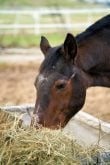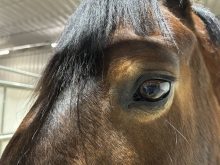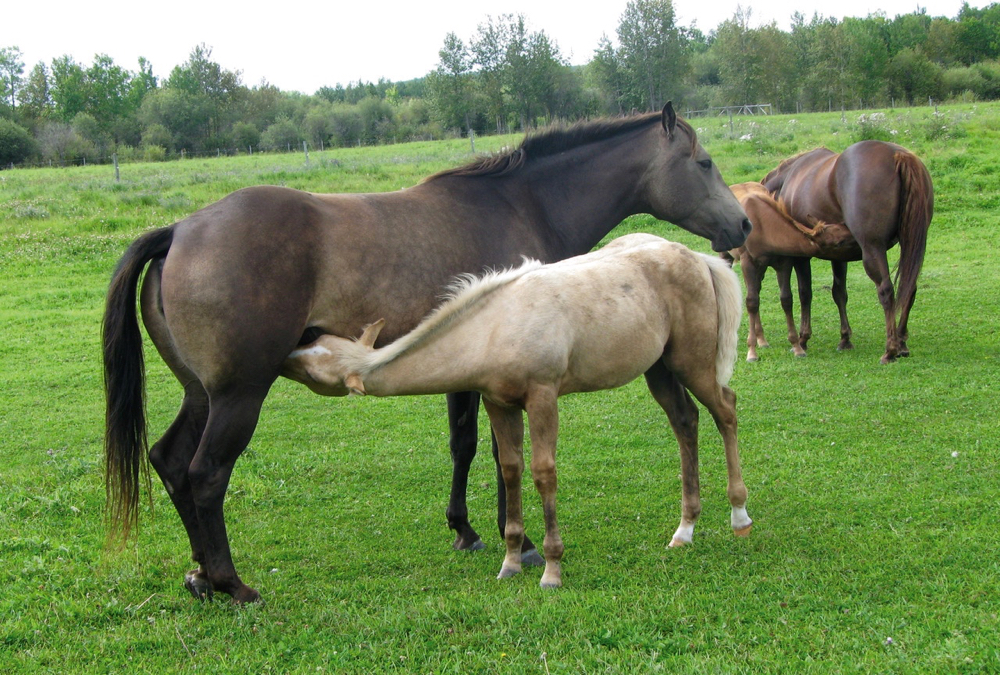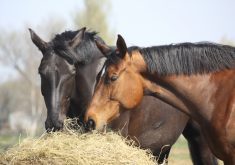Whenever economic times become uncertain, peripheral lifestyle choices such as horse ownership often become affected.
Regardless of the circumstances that initiate evaluation or re-evaluation of financial resources pertinent to horse-keeping practices, it is prudent to understand where allocation of financial resources contribute the greatest benefit to the horse’s well-being.
There is no one single best way to keeping horses healthy. However, the horses that have healthy lives commonly and consistently share certain keeping practices. The wisest flow of financial resources recognizes the basic needs of health for the horse.
Read Also

Horns aren’t unlocking anytime soon on livestock transport standards
Standards good enough meet the definition of “humane” animal transportation still vary widely between what what industry wants, what animal rights advocates want and, between the two, what federal regulators decide is good enough.
The best place to start is at the beginning with the purchase of the horse itself. It may seem trite to mention the obvious, however, the purchase of ‘a’ horse, ‘another’ horse or the choice to breed a mare are major decisions requiring many commitments, financial being just one.
The purchase price of a horse is relatively small compared to the costs of upkeep for proper husbandry, feeding, farrier, dental and veterinary care. A surprising number of horses are purchased for fleeting emotional or romantic reasons or upon an impulse. When the the numbers of horses for sale increases during times of financial hardship and their purchase prices are reduced, it can be tempting to purchase a ‘free’ or ‘near-free’ horse. Consider the decision to own or breed a horse mindfully.
Environmental and social enrichment need to be strong considerations in proper husbandry and welfare requirements of the horse. There needs to be sufficient room and space to answer the horse’s basic biological and psychological needs for movement and horse-to-horse contact. Confinement and a sedentary lifestyle are physically, mentally and emotionally stressful and are often associated with a variety of equine illnesses.
What is the ‘minimum space requirements?’ Horses need others of their kind in the same enclosure, with adequate space to run at full speed and interact without having to turn a constant circle. Think the size of at least one football field. The financial resources measured out to provide horses with a ‘land base’ allows the horse to ‘be a horse’ in as natural a setting as might be possible.
A near-constant supply of good-quality, low-calorie, long-stem forage brings immense rewards in improved health and vitality. Management concepts such as pasture-keeping practices, storage solutions for hay or the implementation of slow feeding practices fall under the umbrella of investing in good-quality forage. Providing horses with some amount of a varied plant diet such as broad-leafed plants, herbs, shrubs and trees — although not always easy — is necessary to attain a healthier mind and body. In many situations offering a well-chosen and varied forage diet is the only nutritional requirement for horses other than water, salt and a free-choice mineral supplement. Marketing campaigns for processed equine feeds and supplements often target well-intentioned horse owners rather than provide benefit or improvement to the lives of the horses. Unfortunately these feedstuffs are not benign and may even contribute to health problems such as obesity and metabolic derangements over time.
Fortunately one of the best dividends paid forward when the horse’s needs for movement, foraging and social companionship are fulfilled will be healthier hooves and healthier dentition. Individual horses have distinct requirements regarding hoof care and dental needs. Being aware of the individual’s requirements alongside timely and sensible intervention of professional services can prevent the considerable costs that can arise from neglect or oversight.
The basic needs of the horse for near-constant movement, near-constant foraging and social enrichment are perennial regardless of economic times and ought to be the primary focus for wise allotment of financial resources towards the health and well-being of the horse.
Placing the emphasis of finances in alignment with these basic needs is essential and rewarding to well-thought-out upkeep for the horse.
















